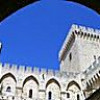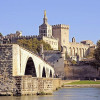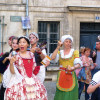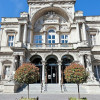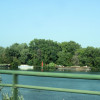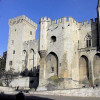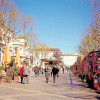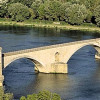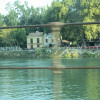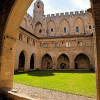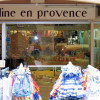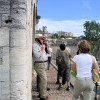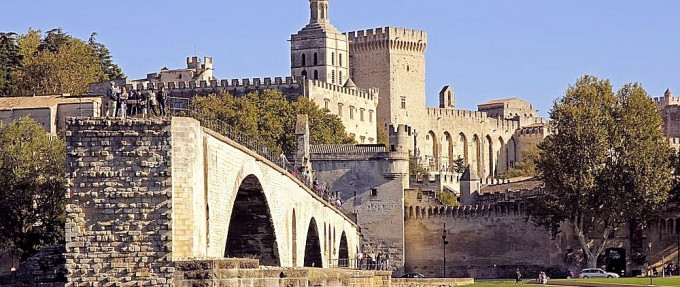
Avignon
One of the best known cities in France, Avignon has so much to see that one could easily spend may days wandering around its ancient narrow streets inside the fortifications.
Start at the Place de l’Horloge, in front of the Hotel de Ville (City Hall), and the Carousel in the large square limed by cafes and restaurants on each side.
From there the Palais du Pape (Papal Palace) is a short walk
Avignon became the residence of the Popes of Rome in 1309, when they fled the violence and chaos occurring in Rome at that time. The Palace was built between 1135 and 1364 on a natural rocky outcrop at the northern edge of Avignon, overlooking the River Rhone. The Catholic church was governed from Avignon from 1309 to 1377, at which time the Popes returned to Rome. However, there followed a period known as the “Schism” until 1408, when popes or anti-popes ruled from Avignon disregarding the Popes of Rome. The Palais du Papes eventually returned to the Papal Legate in 1433. It is now the site of expositions and concerts during the summer months. Self guided tours are available to anyone who may wish to tour the ancient building, room by room, learning about the lives of the former occupants of this historic site.
The Pont St. Benezet, better known as the Pont d’Avignon (as referred to in the well known children’s song), is also open to the public for self guided tours. Legend has it that the construction was undertaken after a shepherd boy was commanded by angels to build the bridge. Although he was ridiculed at first, he dramatically “proved” his divine inspiration by miraculously lifting a huge block of stone. He therefore won support for his project from wealthy sponsors who formed themselves into a Bridge Brotherhood to fund its construction. After his death, he was interred ion the bridge itself, in a small chapel standing on one of the surviving piers on the Avignon side.


